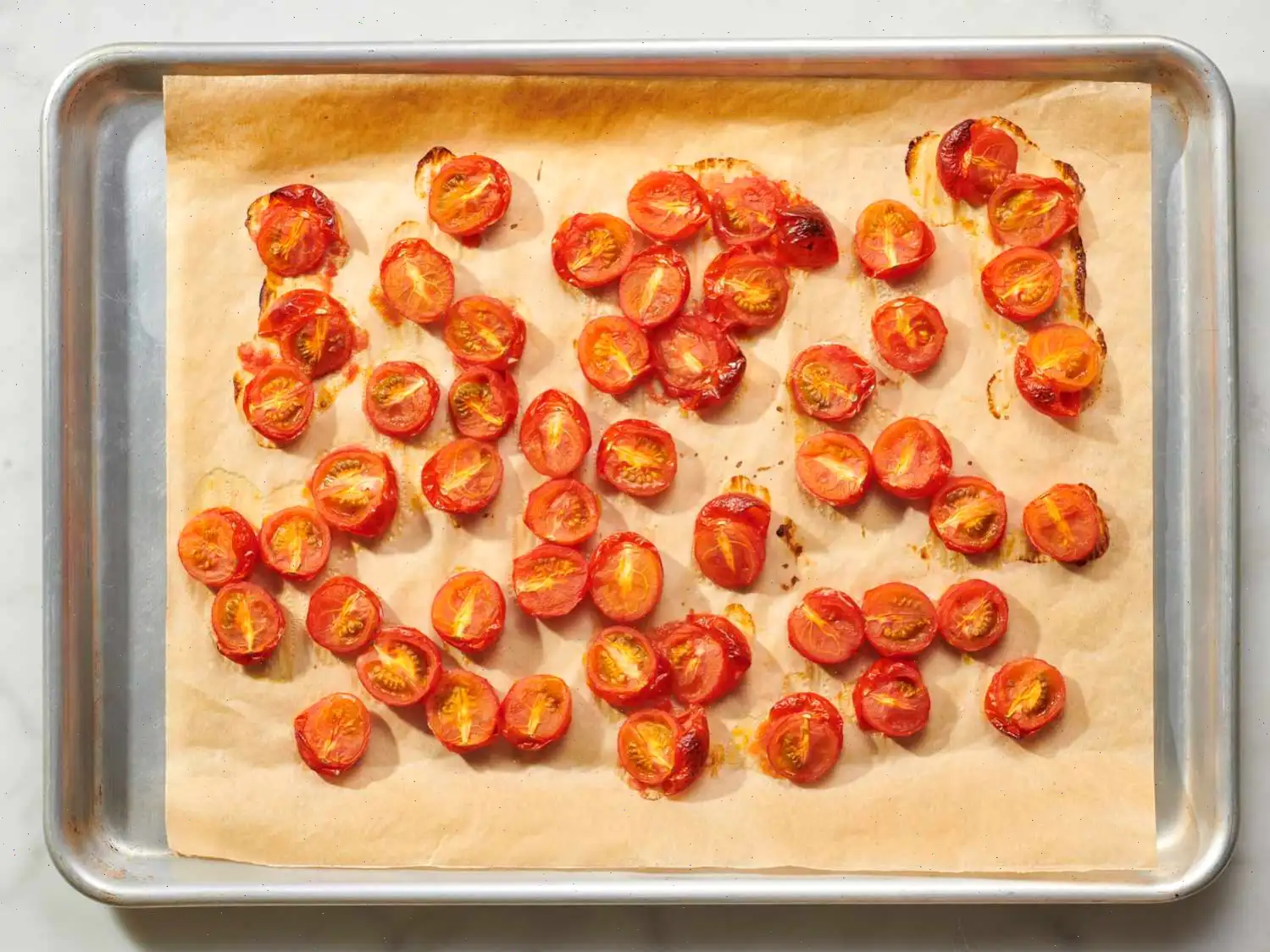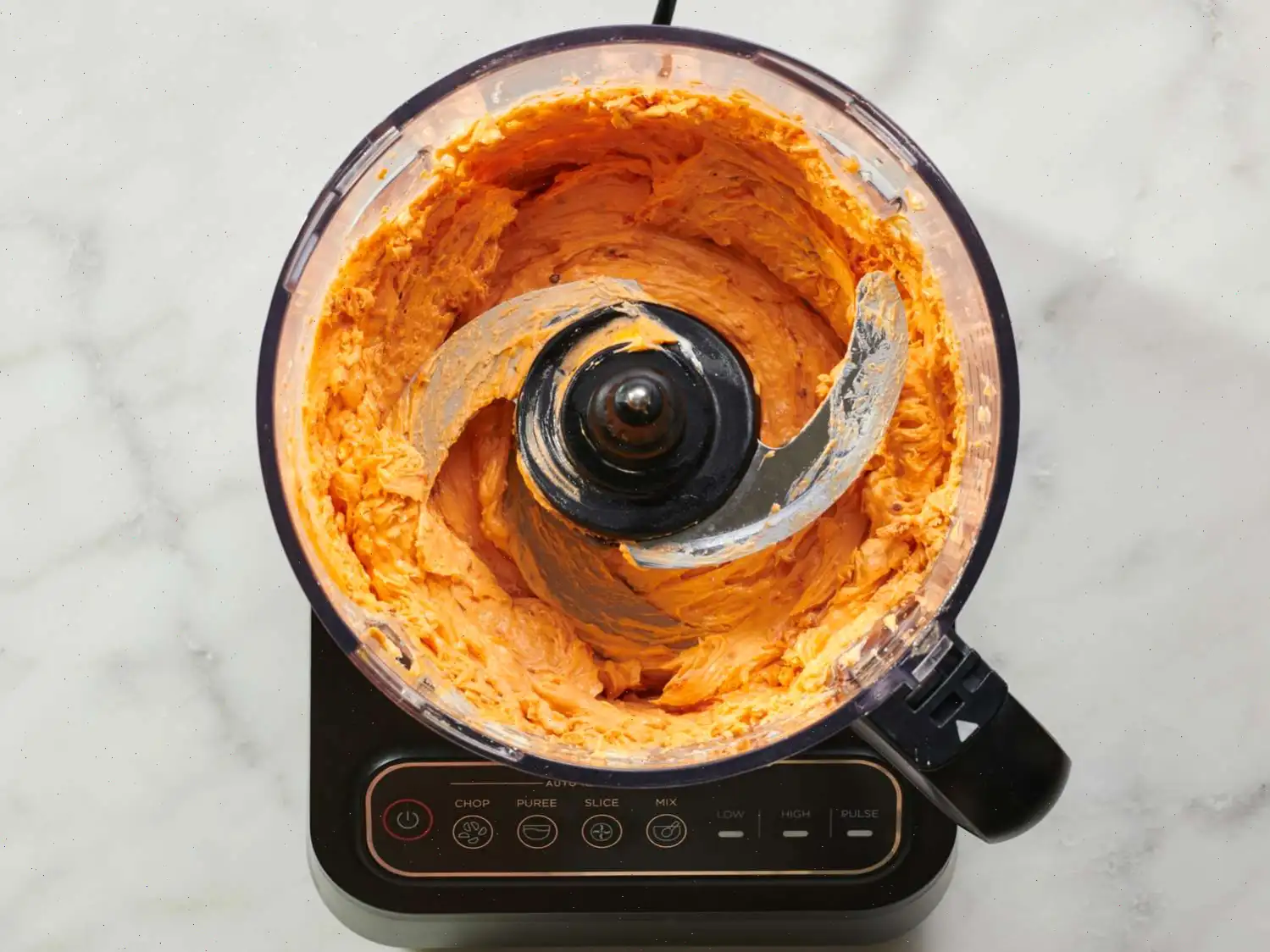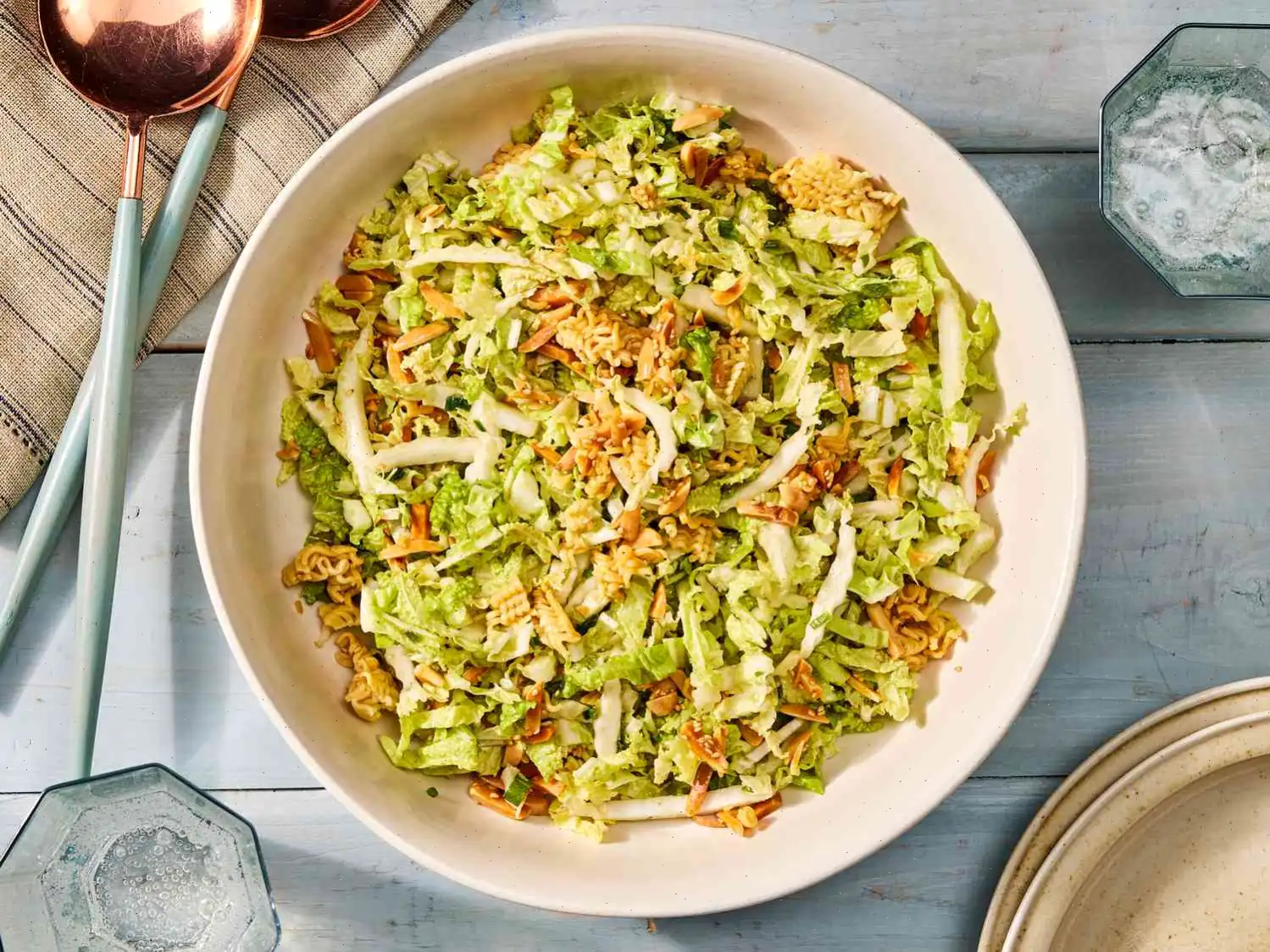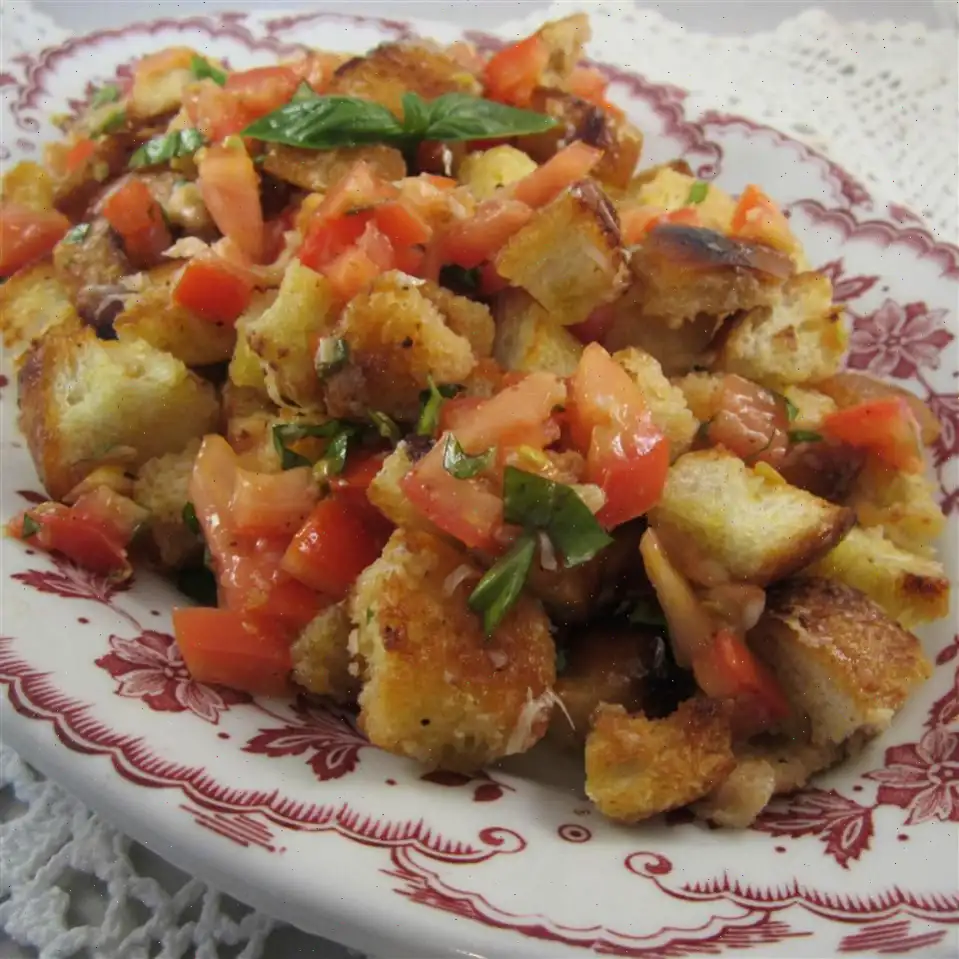
Tomato Butter Recipe
This simple yet delicious spread is made from fresh broiled cherry tomatoes, garlic, and a rich butter base, perfectly balanced with fresh basil. It's a delightful addition to any bread, pasta, or even grilled meats.
Ingredients
- 1 pound cherry tomatoes, halved
- 1 cup butter, softened
- 2 cloves garlic
- 1/2 tablespoon sugar
- 1/2 teaspoon salt, or more to taste
- 1/4 teaspoon black pepper, or more to taste
- 1 tablespoon fresh basil, or more to taste
Directions
- Preheat the ovens broiler. Set the oven rack about 6 inches from the heat source. Line a baking sheet with parchment paper for easy cleanup.
- Arrange the cherry tomatoes on the prepared baking sheet, cut side up. Broil for 5 to 8 minutes until they begin to char and soften.
- Once broiled, remove the tomatoes from the oven and allow them to cool slightly.
- Place the cooled tomatoes into a food processor. Add softened butter, garlic, sugar, salt, and black pepper. Process until smooth.
- Let the mixture cool to room temperature, then add the fresh basil leaves. Pulse the mixture again until the basil is finely incorporated.
- Transfer the spread to a serving dish and enjoy on your favorite bread, crackers, or as a topping for grilled meats.
Nutrition Facts
Each serving (1/12 of the recipe) provides:
- Calories: 145
- Fat: 15g (20% Daily Value)
- Saturated Fat: 10g (49% Daily Value)
- Cholesterol: 41mg (14% Daily Value)
- Sodium: 212mg (9% Daily Value)
- Carbohydrates: 2g (1% Daily Value)
- Dietary Fiber: 0g (2% Daily Value)
- Total Sugars: 2g
- Protein: 1g (1% Daily Value)
- Vitamin C: 5mg (6% Daily Value)
- Calcium: 10mg (1% Daily Value)
- Iron: 0mg (1% Daily Value)
- Potassium: 97mg (2% Daily Value)
* Percent Daily Values are based on a 2,000 calorie diet. Your daily values may be higher or lower depending on your calorie needs.

The Story and Heritage of Tomato Butter
Tomato butter, a delightful fusion of roasted tomatoes and rich, creamy butter, traces its roots to American culinary innovation. While the concept of compound butters has been known in Europe for centuries, the use of tomatoes as the star ingredient reflects a distinctly New World influence. Cherry tomatoes, which gained popularity in the United States during the 20th century, became the perfect candidate for roasting and blending into a smooth, savory-sweet spread. Originally, tomato butter was a way to preserve the vibrant flavor of summer tomatoes for use in colder months, making it both practical and luxurious.
Regional Variations
Across the United States, tomato butter has subtly different expressions. In Southern cuisine, it often includes a hint of sugar or honey to balance the acidity of the tomatoes, creating a sweet-savory spread ideal for biscuits and cornbread. In California, chefs might add fresh herbs like basil or thyme to enhance the natural freshness of the tomatoes. Northeastern adaptations sometimes incorporate roasted garlic or a dash of smoked paprika, giving it a deeper, more complex flavor profile. Each region interprets the dish through the lens of local ingredients and traditional pairings, making tomato butter a versatile and regionally expressive condiment.
What Sets Tomato Butter Apart
Unlike tomato sauces or salsas, tomato butter is defined by its creamy, spreadable texture and its emphasis on concentrated roasted tomato flavor rather than liquid consistency. Whereas tomato paste or puree is often used as an ingredient in cooking, tomato butter is meant to be enjoyed as a finished condiment. Its unique combination of smooth butter and caramelized tomato notes gives it a rich, indulgent quality that distinguishes it from similar spreads, like sun-dried tomato tapenade or tomato jam, which tend to be chunkier or sweeter.
Where Its Commonly Served
Tomato butter is most often served as a complement to bread, crackers, or warm rolls, but its uses extend far beyond. It can enrich pasta, elevate roasted vegetables, or melt over grilled meats for a burst of flavor. Restaurants featuring farm-to-table or seasonal menus sometimes serve it as an accompaniment to artisanal bread boards or as part of a breakfast platter alongside eggs and avocado toast. In home kitchens, it is prized for its versatility and ease of use, allowing cooks to transform simple dishes into something memorable.
Interesting Facts
- Roasting the tomatoes before blending enhances their natural sweetness and adds a subtle smoky flavor.
- Tomato butter can be frozen in small portions and used throughout the year, making it a practical way to enjoy summer flavors in winter.
- Adding fresh herbs at the final stage preserves their aroma, giving the spread a vibrant, fresh quality.
- Some chefs experiment with flavored salts, roasted peppers, or citrus zest to create unique variations, demonstrating the condiments flexibility.
- Despite its name, tomato butter is not a baked dessert; the butter refers to its texture and richness rather than a sweet flavor.












